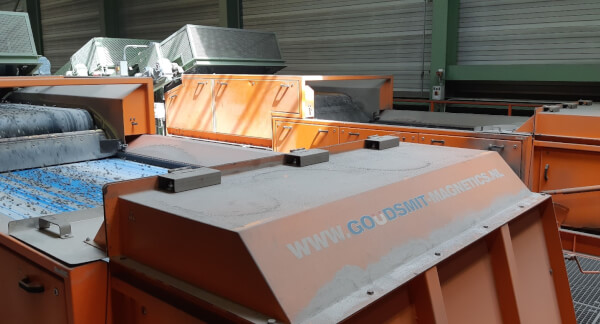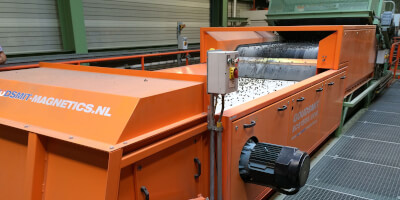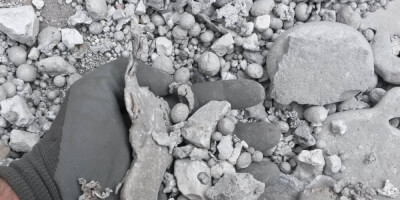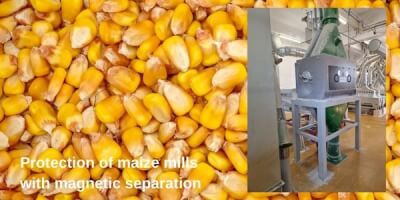Magnetic separation of ferrous and non-ferrous metals from incinerator slag
Magnetic separators by WAMAG and Goudsmit Magnetics help change slag from waste incinerators into valuable secondary raw materials.
Slag from communal waste incineration contains many useful materials such as ferrous metals (5-13 %), non-ferrous metals (2-5 %), rare earth metals, glass and ceramic (5-30 %) and minerals usable in civil engineering (50 – 70 %). [1]
This article focuses on the recycling of slag in a waste incinerator owned by Twence. The waste incinerator is located nearby the city of Hengelo (80,000 inhabitants) in eastern Netherlands. The plant catches the eye even from a distance by its colourful, modern buildings and unusual smokestack. The multi-storey automated slag sorting line is installed in a hundred metre hall of the incineration plant. The purpose of magnetic separators manufactured by Czech company WAMAG is to remove ferrous parts from the processed material. The separators are followed by a system of eddy current separators for non-ferrous metals, manufactured by Dutch company Goudsmit Magnetics.
Material delivered by refuse collection vehicles and material extracted from a nearby waste dump serve as input material. Once the waste is incinerated, the ash is cooled with water, pulverised in a crusher and delivered to the sorting line hall. The line starts with a belt conveyor more than a metre wide. The fed material consists largely of humid, coarse crushed material containing random objects such as melted tin cans or remains of wires.
The entire line is operated by only five workers: a supervisor, three operators and one handler. The supervisor is in charge of ensuring that sorting runs smoothly, monitoring it through a camera system installed at key points on the line. The operators control the functioning of all the devices in the line. The handler removes the largest objects that could cause the line to stop. and is also in charge of cleanliness in this rather dusty environment.
The crushed slag is first sorted by a overband magnetic separator, which collects the largest ferrous parts. Then the slag continues to multi-stage magnetic separation. The processed material passes, step-by-step, through suspended magnetic separators, magnetic drum separators and magnetic headrollers.
Looseness of material and sorting by grain size is ensured by vibrating grates and rotary force. The intermediates and final products of separation head into fixed or mobile containers. All these devices are incorporated in the transport routes and conveyor lines in a way that guarantees smoothness of recycling. The fractions of sorted material become gradually finer and finer until they reach particle sizes in the order of millimetres. At the end of the sorting line, the individual grain-size fractions are fed into a system of eddy current separators that collect non-ferrous metals, such as copper or aluminium.
The Twence incinerator is an example of extremely successful integration of a facility of this type into the landscape. It helps efficiently dispose of and recycle waste material from waste dumps and collected communal waste not only from Hengelo and its surroundings, but even from more remote locations.
Author: Ing. Jana Kolářová
Sources: [1] Materiálové využití strusky ze spaloven komunálního odpadu, Michal Šyc et al., TVIP 2015. Available from: http://www.odpadoveforum.cz/TVIP2015/prispevky/028.pdf [cit. 9. 9. 2018]












